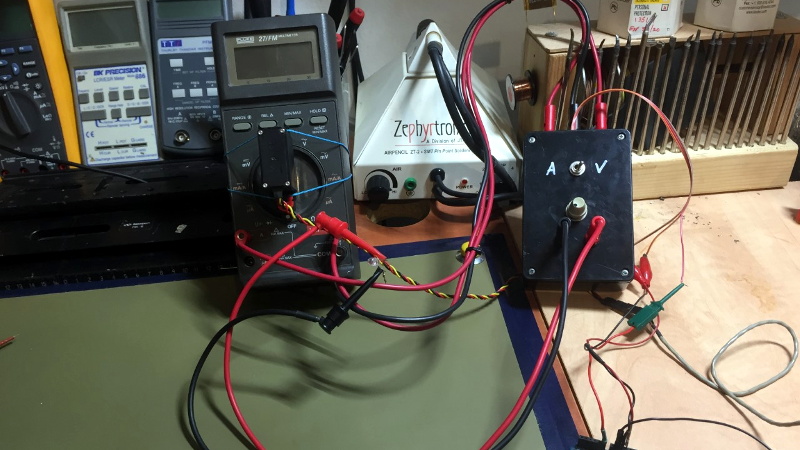This tip comes our way courtesy of [Elad Orbach], who’s been experimenting with a device that uses a servo to turn the function dial on a multimeter. It’s something you can put together in a few minutes with leftovers from the parts bin, and as you can see in the video after the break, the basic concept seems to be sound enough.
As to finding a practical reason for spinning the switch on your meter with a servo, that’s left largely as an exercise for the reader. [Elad] hints at the possibility of using such a setup to help automate repetitive testing, which we could see being useful especially in combination with a foot pedal that allows you to switch modes without having to put the probes down. The same basic idea could also be helpful as an assistive device for those who have difficulty grasping or limited dexterity.
Whether top of the line or bottom of the barrel, the multimeter is easily the hardware hacker’s most frequently used tool (beyond the screwdriver, perhaps). We’ve seen plenty of projects that try to graft additional features onto this common gadgets, though automation isn’t usually among them.
















bought a new DMM just a few minutes ago, love this hack just for the potential whimsical nature.
This uses a switch to turn another switch, awesome!
Next, should add bluetooth and WiFi, so we can go on the internet, to turn on a switch!
even better, the switch should have a a servo to toggle the switch, controlling the servo on the DMM.
Next, make sure you add an arduino, and at least 3 “lightweight” frameworks.
If you don’t need at least a quad core and 4GB of ram to turn that DMM from V to Ohms, you are doing it wrong.
🤣🤣🤣🤣🤣🤣🤣🤣🤣🤣🤣
Bill G may be a troll, but come’on guys this is pretty funny if you ask me.
Hey you can do the same to the tuning knob your 1975 vintage color portable TV and remote control 68 different choices of interference snow… unless you’re up north then 66 channels of interference and 2 local channels.
Why not go all the way? Build a meter with autoranging via a servo mechanicaly turning a switch?
Then go the way of early digital vo!tmeters, an op-amp feeding a motor (connected to a mechanical digital counter) anda pot to provide feedback back to the opamp.
I kniw I once saw something about this in a surplus ad, I thini Meshna’s, but gatyer it was done commercially, maybe Non-Linear Systems.
The point here is this is a simple way to test with 2 leads on a component both I and V and never have to fiddle and figure which of the three leads coming out of the meter goes where. Get the current one across voltage and poof another fuse is gone. That’s why they have a separate banana jack. If the box had a voltage sensor and automatically not switch or the other position was ohms it would be handy too.
Good for testeing.. . errr… What exactly? The switch? Cheap multimeter switches are crap… if you are doing a lot of testing, use two or more multimeters, and save yourself the heartache of wearing out the switch.
One of my DMM can show voltage and current at the same time on its dual display.
How about taking the “space command” off of an old Zenith TV set to turn the dial. That would include using vacuum tubes and as a bonus if you you ever lost the remote for your DVM you could just jingle your car keys at it.
Sadly but truly when I got my first car stereo with a remote I recalled thinking that was about the dumbest thing I had ever heard of, and now I can not drive without it. In defense of the car stereo remote though, it does have individual buttons for all the frequently used functions, and the stereo itself has the one rotary encoder and about 10 different “modes” you have to select to do anything besides turn the volume up and down, and it is way too easy to get it into a weird mode and not be able to get back out of it. The remote actually gives you a much more user friendly interface.